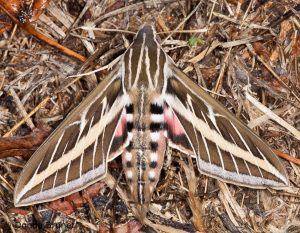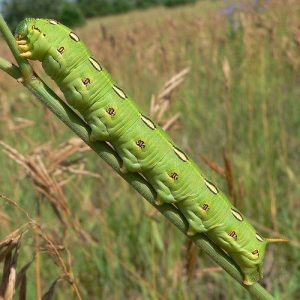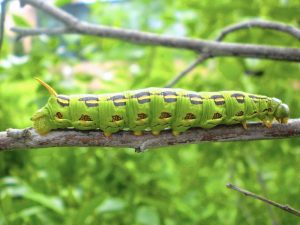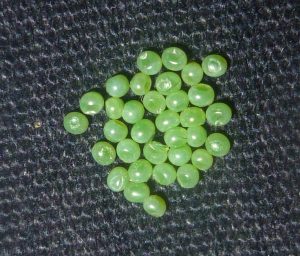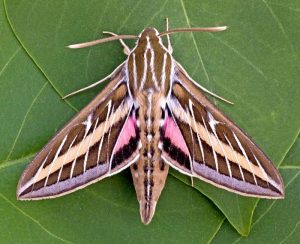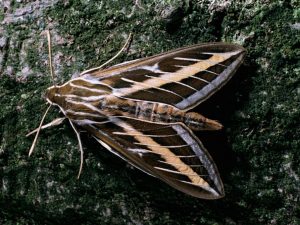White-lined Sphinx Moth (Hyles lineate)
White lined sphinx moth of the Sphingidae family has a wide range occupying parts of North America and Central America. The prominent white lines covering the veins of the adult moth’s wings account for their name.
nature.mdc.mo.gov
Scientific Classification
- Family: Sphingidae
- Genus: Hyles
- Scientific Name: Hyles lineate
Description and Identification
Caterpillar
They appear black with orange spots lined down their entire body. Their head and anal plate’s prothoracic shield are of a similar color, either orange or green, with tiny black dots all over. One could even see a horn protruding from behind their body that varies in coloration, either orange or yellow-tipped in black. However, they do not sting with their horns and do not cause harm to humans.
Pupa
The pupal stage takes place underground as the larvae make burrows inside the soil once ready for pupation.
Adult Moth
Sexual Dimorphism: Present but not prominent
Color and Appearance:
Forewings: When opened, it appears dark brown with tan stripes running across from the bottom to the top. There are also prominent white lines covering the veins. When closed, the color and pattern remain the same.
Hindwings: When opened, it is black intersected with a broad pink band. When closed, the pink pattern is less prominently seen.
It is stout and furry, while the back part of its dorsal region also has white stripes similar to the pattern seen on its wings.
Average Wingspan: 5.08 – 7.62cm
Flight Pattern: Rapid
Season: February – November
Quick Facts
| Distribution | North America and parts of Central America mainly encompassing parts of southern Canada, Mexico, and a significant part of the United States |
| Habitat | Grassland, park, garden, scrubland, desert |
| Predators | Bats and birds |
| Lifespan of adults | Not recorded |
| Host Plants | Larvae: Willow weed, elm, grape, apple, tomato, evening primrose, fuchsia, four o’clock, purslane Adults: Petunia, honeysuckle, moon vine, lilac, bouncing bet, clovers, columbines, larkspurs, clovers, thistles, Jimson weed |
| Adult Diet | Nectar of flowers |
Did You Know
- The nocturnal moths choose pale or white flowers as their food source, while the diurnal ones select bright-colored flowers.
- Because of their big size and erratic flight patterns that resemble a hummingbird, they are also called the hummingbird moth.
Scientific Classification
- Family: Sphingidae
- Genus: Hyles
- Scientific Name: Hyles lineate

